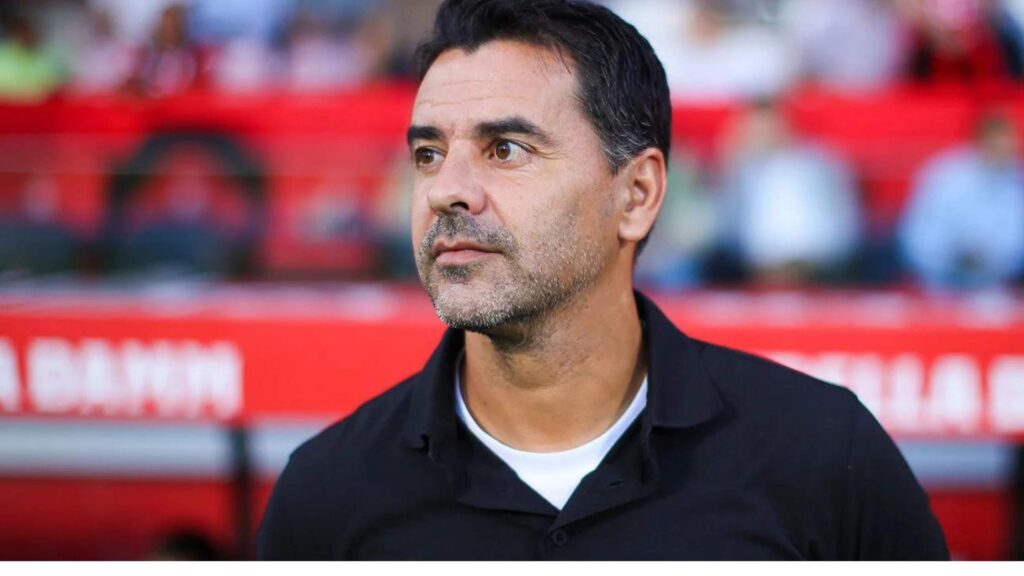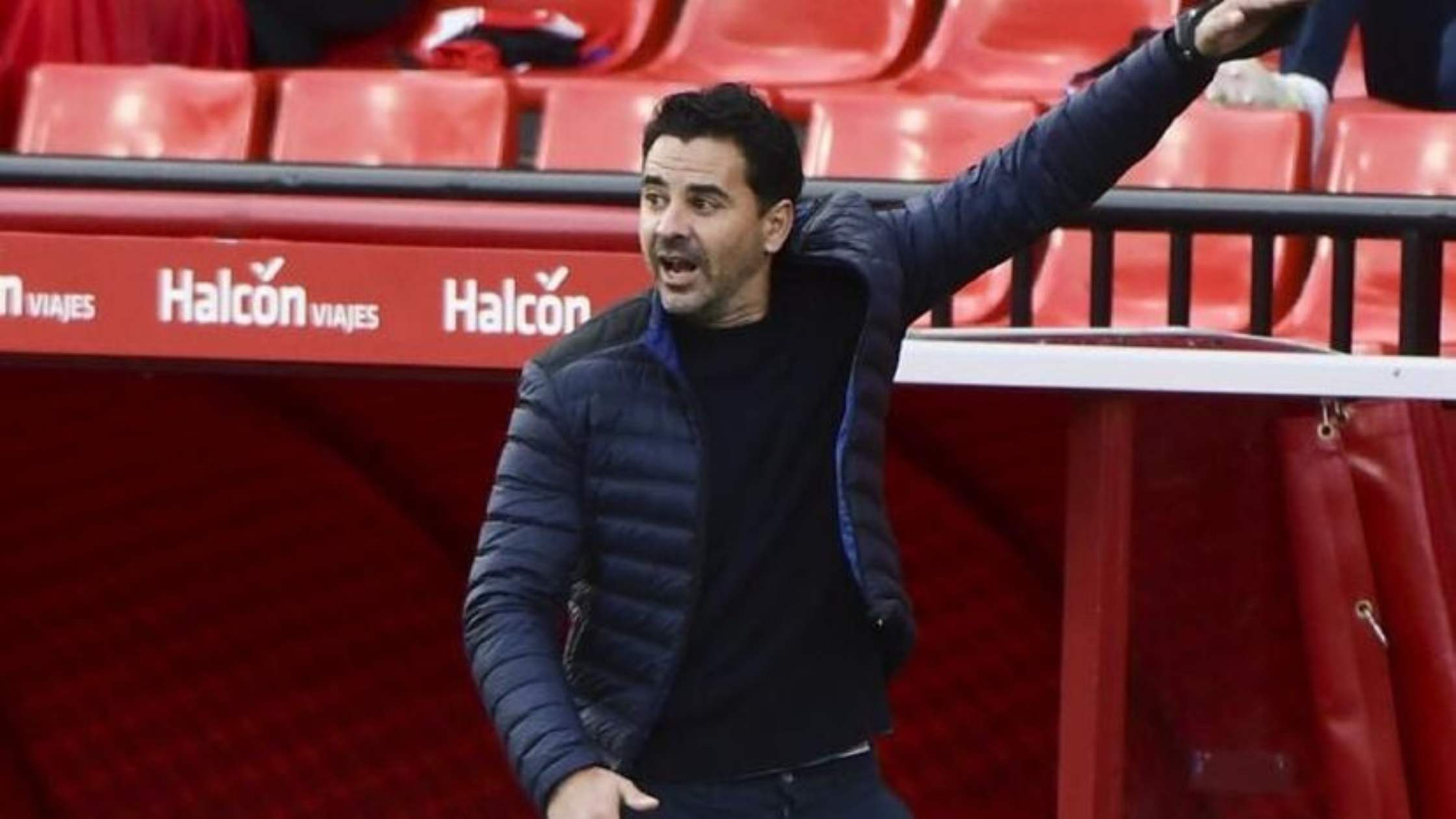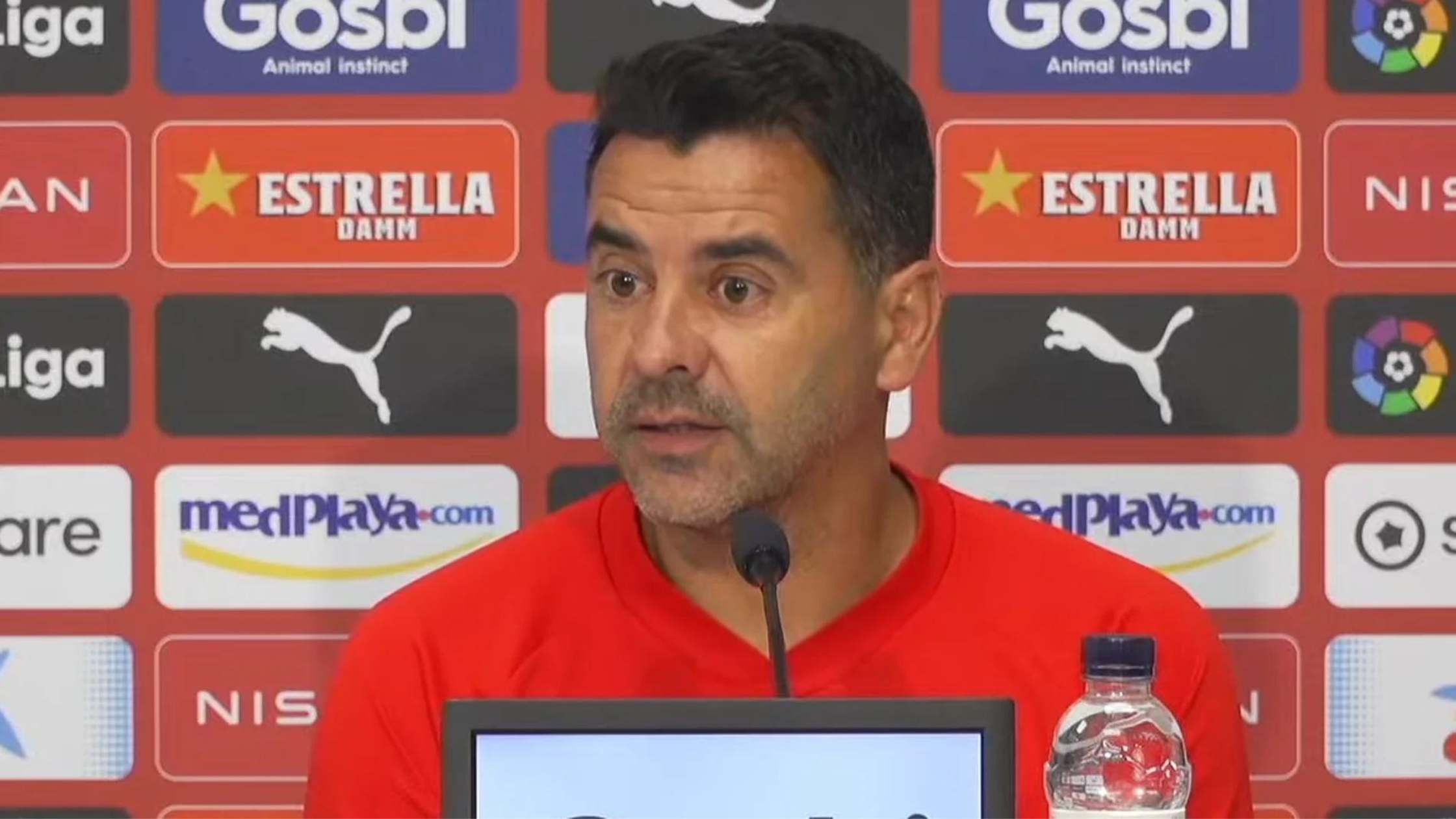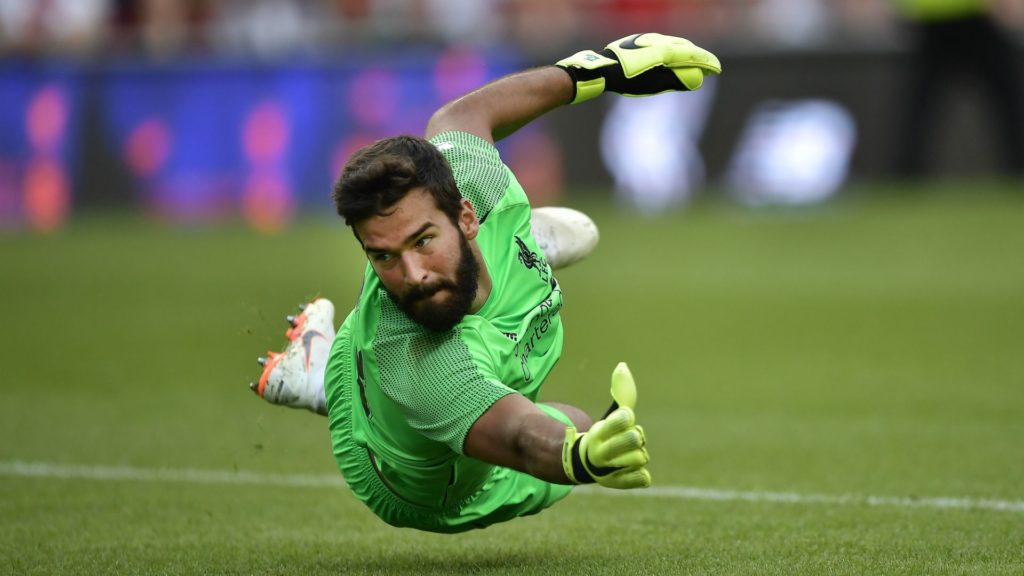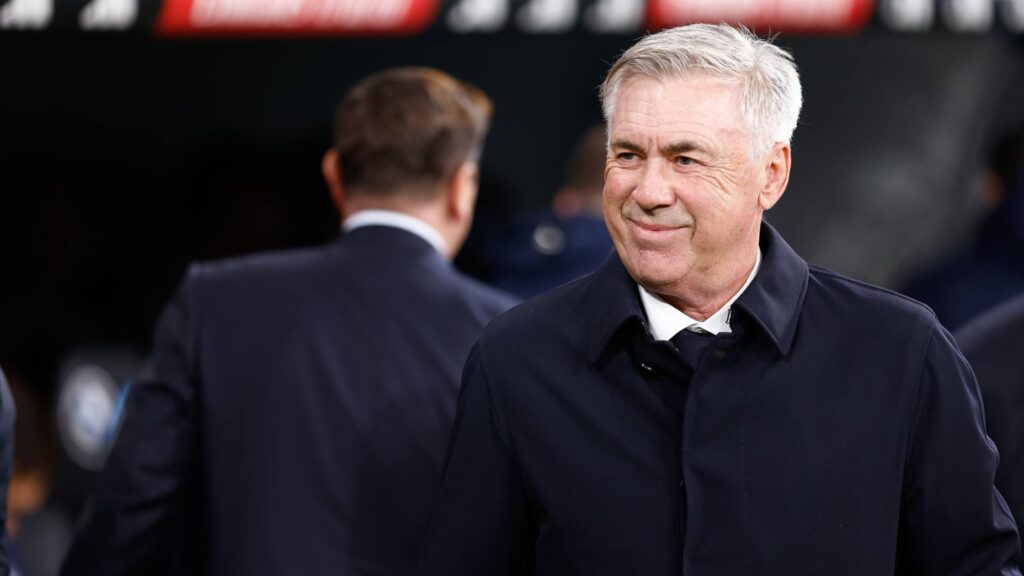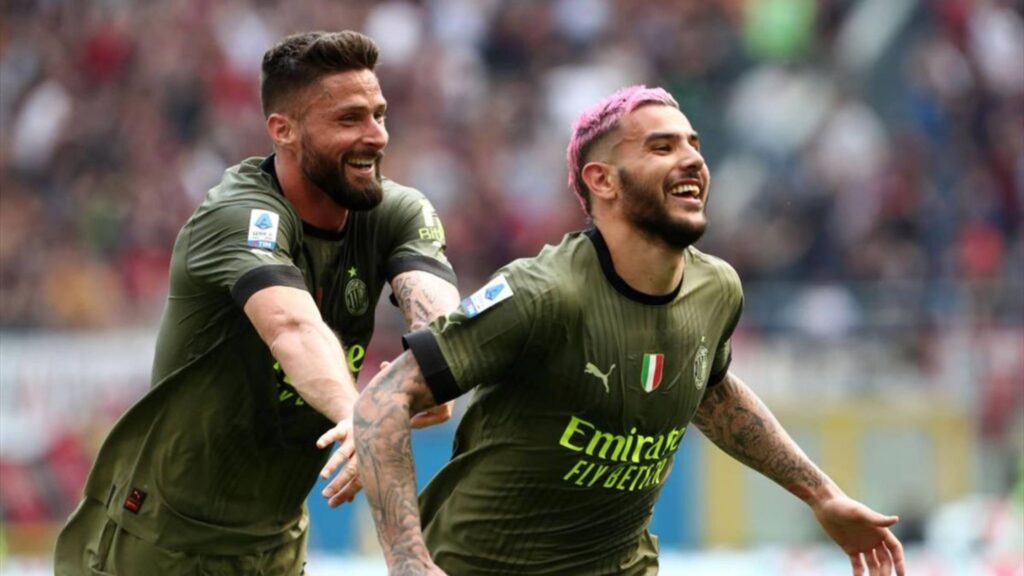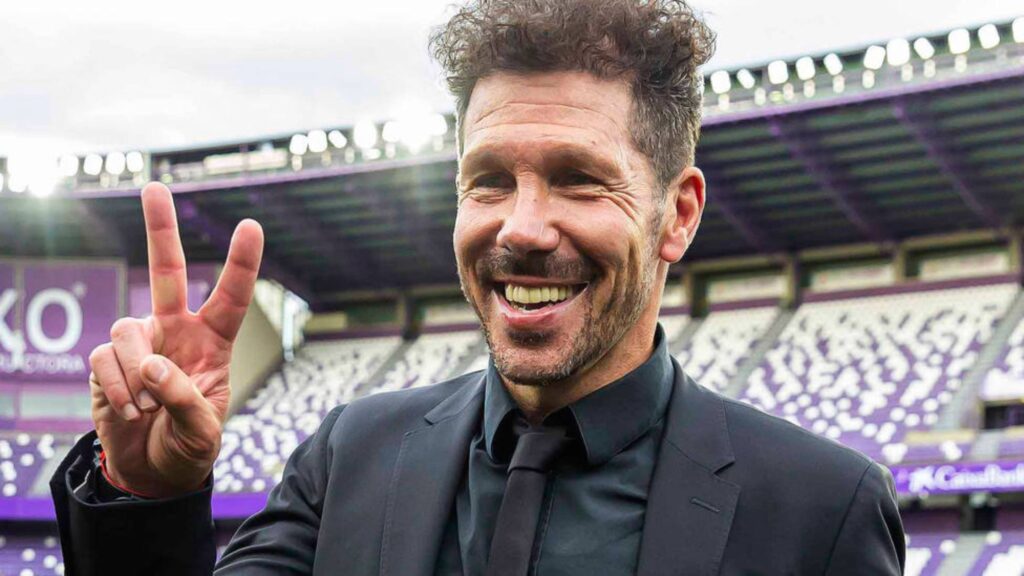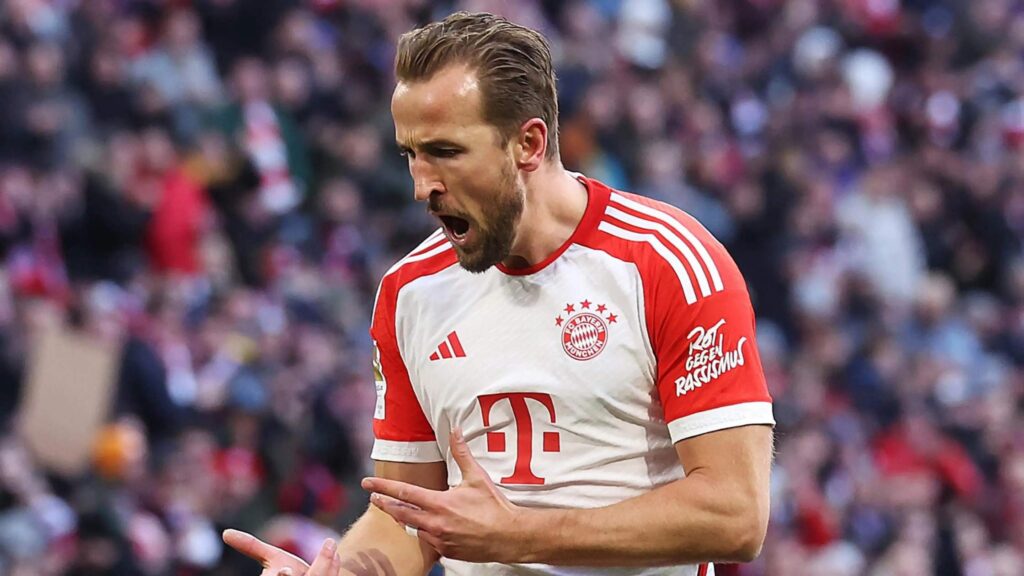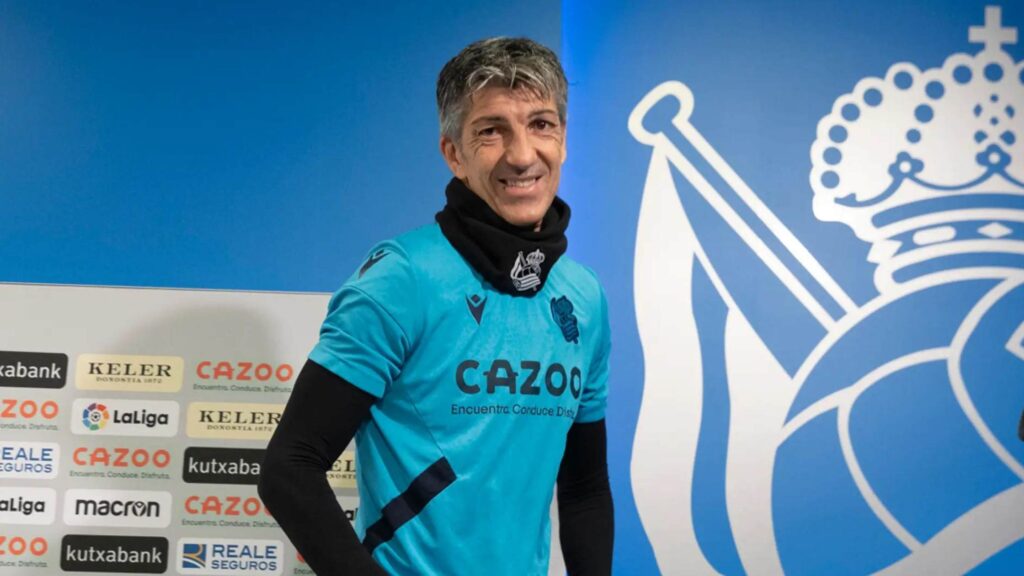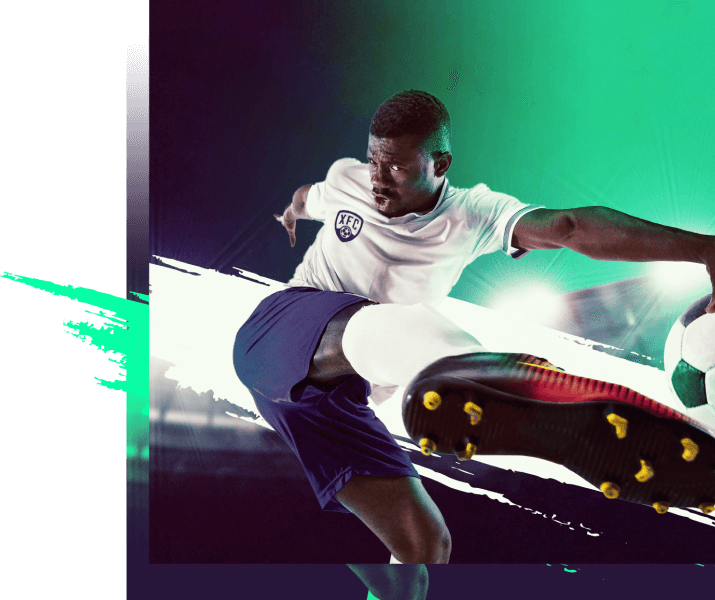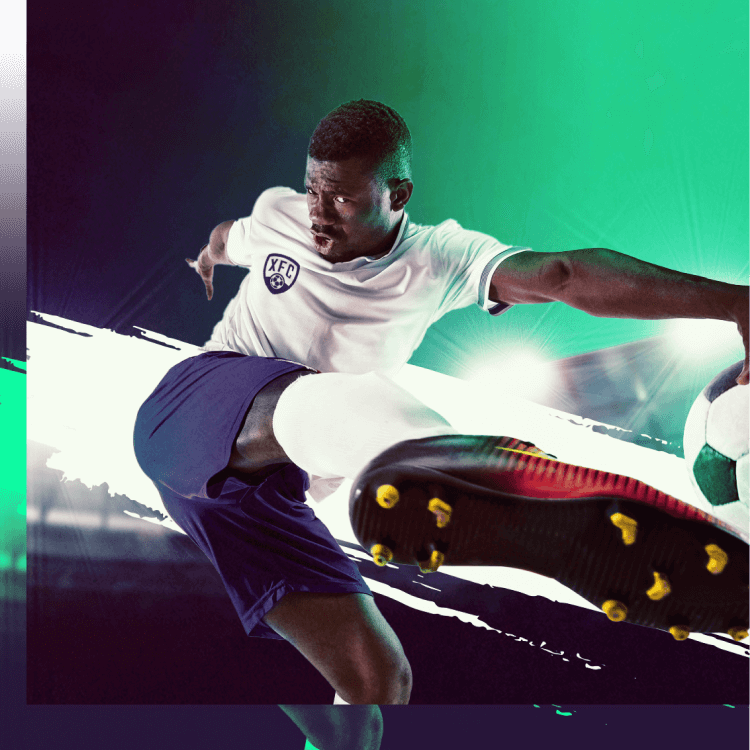Michel’s tactics have turned Girona into, perhaps, the unlikeliest success story in European football since Leicester City. They haven’t won La Liga yet. But the results the team enjoyed in 2023 are enough to make us wonder just what’s going on that’s so special at La Liga’s Girona.
This is why today I will be looking at the tactics and football philosophy that Michel has used to turn Girona into an unexpected force in Spanish football.
Michel’s career before football management
Michel played almost 200 La Liga matches. Although his career was highly respectable, it did not include silverware. He was a dependable and skilled central midfielder already known for his tactical discipline.
Although the single-name presentation might have you thinking of South America as his birthplace, Michel is actually from Madrid. He was part of Rayo Vallecano’s youth setup. He made his debut for the senior squad in 1993, spending a decade with the club.
Michel later played briefly for Murcia and Malaga before returning to Rayo Vallecano, spending another six seasons and ending his career as a professional player with the same club where it all began.
His first foray into management also, naturally, involved Rayo. He guided the team to promotion at the end of the 2018 season. He fared less well in La Liga, and following his dismissal, Michel took on the role of Huesca’s manager. It was much the same story here, as the Spaniard guided Huesca for Secunda Division to the top tier before being dismissed for poor results.
Michel was now a promotion specialist. He was expected to do the same when he became manager of Girona in 2021. He achieved this in his first season. Back in La Liga, however, Michel did not deal with poor results once again. Instead, Girona led the league for the first part of the 2023/24 season. It’s a tremendous upset considering that the team is battling against clubs such as Real Madrid, FC Barcelona or Atletico Madrid or that Girona was viewed as a relegation candidate.
Football Philosophy
Michel’s football philosophy is integral to Girona‘s exceptional season. The team plays attacking football, a rarity for most teams of their stature.
They usually play a back three but otherwise are willing to adapt their system depending on the opponent. Also, Michel entrusts his most technical players with moving the ball from the back and fighting off the opposition’s pressing. His man-management skills cannot be understated here.
Secondly, we must acknowledge other factors outside of the manager that contributed to this rise. The team is owned by Pere Guardiola, Pep’s brother, and the wealthy CFG group. This connection has helped Girona attract top, albeit underrated, talent. Midfielder Aleix Garcia, for example, was once on the books for Manchester City.
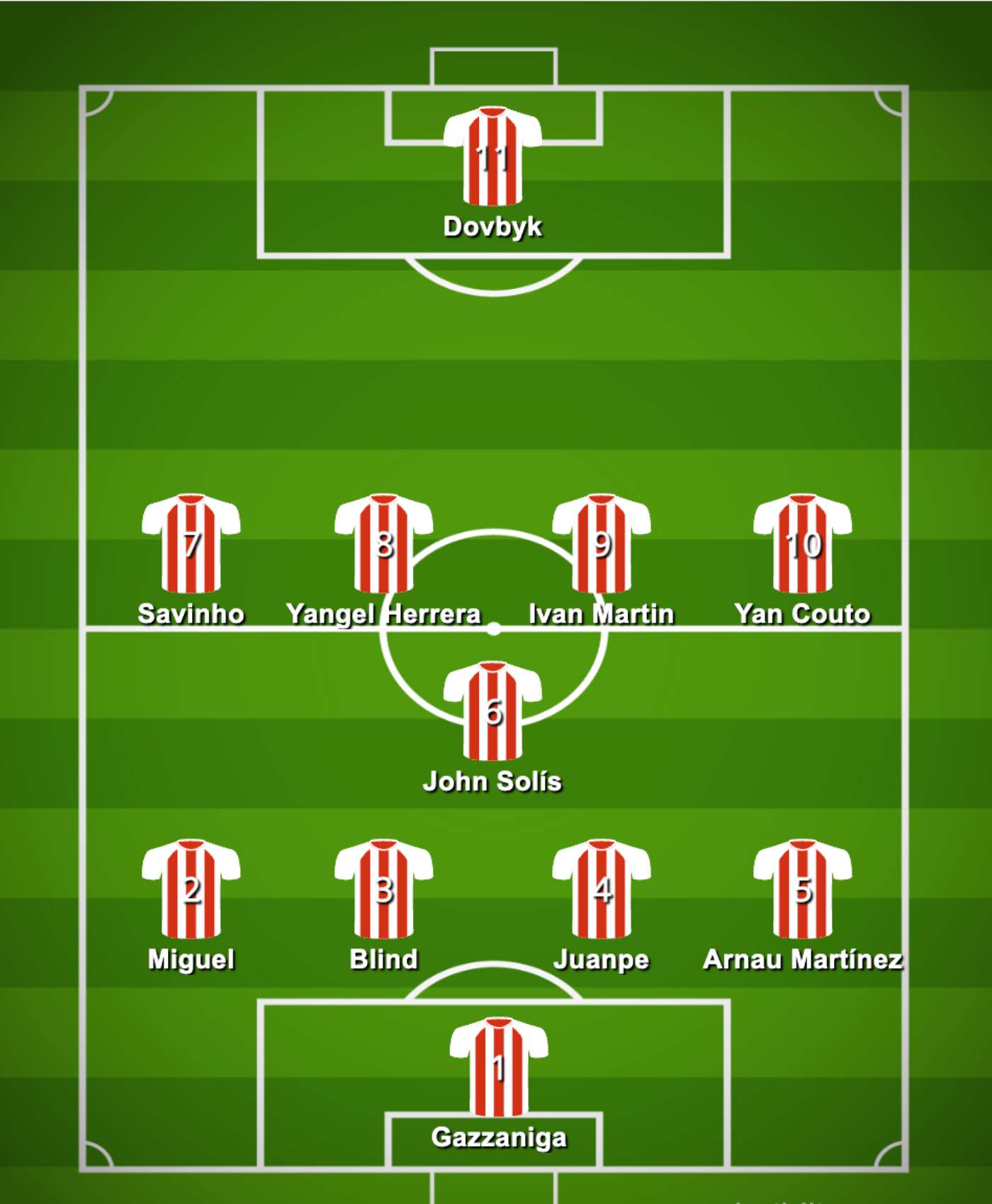
Tactics at Girona
Michel’s tactics, we’ve established, are integral to Girona’s success. But these are also difficult to master instructions. The team needs a core group of players with a remarkable skillset in order to be able to pull them off.
Girona’s recruitment policy this season has been excellent. The team has brought in experienced players like Daley Blind who contribute know-how accumulated while playing in the most important competitions. They’ve also recruited relative youngsters desperate to prove their worth, such as Sávio or Eric García.
These are highly intelligent players who are able to implement Michel’s complex and demanding tactics.
Formations and adaptability
There are tactical elements that, for Michel, are non-negotiable. This includes encouraging third-player runs or having the team advance the ball through the flanks while creating numerical superiority.
Everything else, however, is subject to change. Girona’s players will often switch shape, sometimes during a game, to respond to the difficulties posed by a particular opponent.
Girona has used at least five distinctive formations this season. Earlier in the campaign, the team was known to play with a back three. The 3-4-2-1 formations served the team well. However, recently, they’ve often adhered to a 4-1-4-1 formation where Aleix Garcia is almost used as a regista.
When in possession, Girona’s players try to create width and attack the flanks. They will often use a 4-2-3-1 formation when they are building up. When they are defending, Michel’s players will move in a low block, usually in a 4-1-4-1. They will try to move the opponent within the congested centre of the pitch.
These tactics have worked well. A team cannot accidentally lead the La Liga table after half a season. Michel’s adaptive philosophy has played a tremendous role in this.
Girona in defence
Girona’s defensive tactics have also undergone changes since the start of the season. At the start, the team would typically play with a back four. Girona would sit in a low block. More recently, the team has played with a back four and utilized a mid-block. After all, Blind and Lopez tend to lack pace, and playing with a high defensive line is really not an option for Girona.
However, the team’s main defensive objective has remained the same. The team tries to protect the wide areas. Instead, opponent players are guided inside and “into traffic.” It usually means that only the most technically proficient teams can create scoring opportunities. To date, only Atletico, Real Madrid and Mallorca have scored more than three goals in a game against them.
But, undeniably, Girona’s tactics are a high-risk, high-reward proposition. In their defensive third, central defenders engage in aggressive pressing. Central defenders David Lopez and Blind play with very small width. Regista Aleix Garcia moves to try to create defensive superiority when out of possession.
The team has also proved vulnerable to dead-ball situations. Still, keeper Paulo Gazzaniga’s performances overall have been good. And, after all, Girona have adopted an approach where they try to outscore opponents regardless of how many goals they concede.
Build-up play
Ideally, Michel wants Girona’s players to do two things when building up: to move the ball comfortably from the back and to bring it into wide areas where they can create superiority.
As the season progressed, teams began to read Girona’s game better. It’s meant that players like Yangel Herrera or Daley Blind, have more often been asked to perform under pressure. Typically, they will drop back, with Michael Guttierez and Aleix Garcia also acting as double pivots to receive the ball.
Since Girona likes to attack wide areas of the pitch, they are dependent on the performances of the wing-backs and wingers. The team tends to attack using a 4-2-3-1 formation. On the right, wing-back Yan Couto and winger Viktor Tsygankov will combine to get the ball in the final third. The same happens on the left with Daley Blind with Sávio.
The team’s players are also in a continuous state of flux. Michel wants his players to create superiority in midfield. This might mean that deep midfielder Aleix Garcia or striker Artem Dovbyk move to assist the player in possession and create triangle shapes for passes.
Third-man runs are encouraged. Furthermore, Girona’s midfielders are technically advanced enough that they encourage pressing. In fact, they use the opposition’s press as an opportunity to launch passes toward teammates, quickly building an attack.
Attacking structure
Girona’s attacking structure reveals a highly mobile team. Yes, the majority of their goal-scoring opportunities come from floated crosses from the final third. Still, the movement of the players means that the team has a number of options for how to get the ball into the net.
This can be appreciated by taking a look at the team’s list of goalcorers. The team’s number nine, Dovbyk, has scored to date 11 goals and provided 5 assists. However, a large number of goals have come from the combined efforts of Savio, Tsyganov, Herrera, and Aleix Garcia. Even veteran Christian Stuani, Dovbyk’s deputy, has brought in a respectable 6 goals and 5 assists.
Michel wants his players to get the ball in wide areas. Here, they create overloads where the wing-back and a midfielder will assist the winger. The winger may cut inside, or the wing-back may do so. Typically, the ball will be crossed toward the far post.
Still, from this position, the ball may also be brought centrally for a midfielder to take a shot, or the winger may try and force a foul from a dangerous position. Girona has scored 3 goals from the penalty spot and 3 have resulted from free kicks this season. It’s not a bad turnover.
What does the future have in store for Michel?
Michel’s Girona tactics have proved a revelation. Against the odds, they’ve helped put the team on level pegging with teams like Real Madrid. Regardless of what happens next, this achievement will not be easily forgotten.
Michel has drawn the attention of top European clubs such as Newcastle. However, unless an opportunity that is simply too hard to refuse comes along, it’s unlikely that a man that spent most of his playing career representing one club, will choose to leave Girona.
It is hard to know if Michel or Girona can sustain this pace. However, their considerable financial backing means that the club can continue developing and that Michel will likely be the man to continue handling the project.
